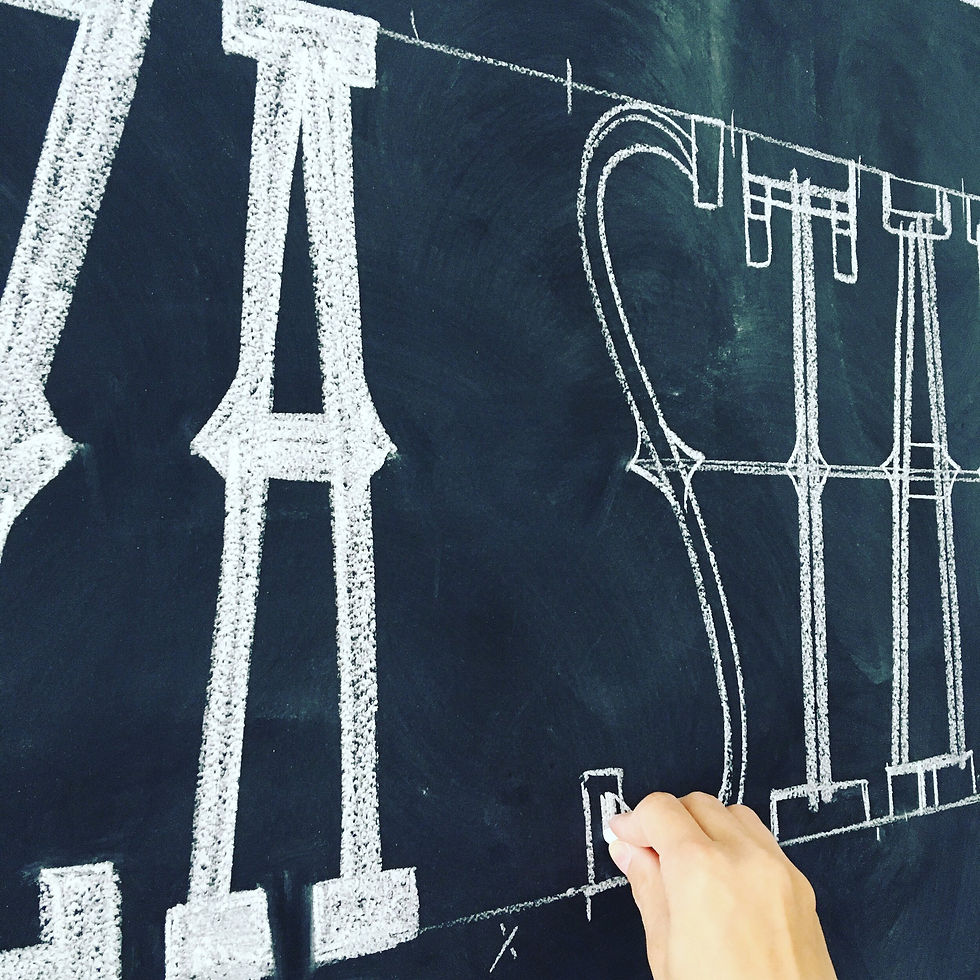Types of Chalkboard Treatments
- Katie Bush
- May 28, 2019
- 2 min read
Updated: Apr 24, 2024
I offer three different types of chalk treatments for chalkboard applications:
Traditional chalk
Chalk pen
Permanent chalk
In this blog post, I’ll break down the pros and cons of each, as well as the best situations to use each treatment.



Traditional Chalk
Traditional chalk is just that: The long stick-type chalk that your teacher used on the blackboard when you were in school. It’s sometimes called sidewalk chalk or gritty chalk.
Pros: Creates a classic chalkboard look, handmade aesthetic, easy to erase, easy to change out content
Cons: Chalkboard needs to be seasoned before application, can be dusty, smears easily
Notes: Traditional chalk can be sealed so that it won’t smear as easily. If your chalkboard was painted with chalk paint, this is the recommended treatment.



Chalk Pen
Chalk pen is a very popular material these days as they are made in bright and fun colors and give more control to the artist.
Pros: Creates a crisp look, doesn’t smear unless your hands are damp, can be easy to remove on plastic chalkboards
Cons: Can easily “ghost” when erasing, may require a chemical treatment to remove, looks more striated than gritty in texture
Notes: If your chalkboard is plastic-based, this is the recommended treatment.



Permanent Chalk
I developed a permanent chalk treatment when a client needed a chalkboard application that was weather-resistant.
Pros: Creates a crisp look, does not smear at all
Cons: Does not erase, requires the surface to be repainted if you want to change anything
Notes: If you need a weather-resistant chalk application or you don’t plan on changing your chalkboard in the near future, this is the recommended treatment.
Still unsure which treatment is best for you? Contact me and I can help!




Comments